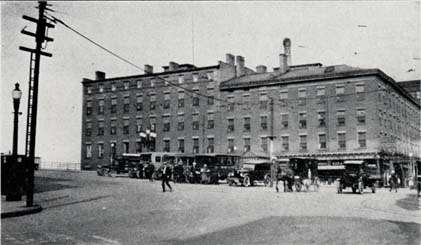Places and Politics
Before the Civil War, Hattie Sheldon and her family in Utica, NY couldn’t avoid being front row witnesses to such momentous improvements as the opening of the Erie Canal, the unrest of abolitionism, and the daring of the Underground Railroad. Likewise, political developments like the Fugitive Slave Act undoubtedly created havoc of all kinds nationwide just prior to the explosive impact of Harriet Beecher Stowe’s anti-slavery novel, Uncle Tom’s Cabin. The definition of freedom was already strained due to the earlier, ill-fated policy of Indian Removals, the impact of which was not known widely enough at the time. But it mattered to Hattie.
More to Explore
Hattie’s Home
UTICA, NY
Right on the Mohawk River, bustling Utica, NY, in Oneida County has long been a convenient port for travelers going west. The Chenango Canal joined the Erie Canal at Utica in 1836, which further encouraged explorers. It also assisted the region’s booming textile industry. This level of traffic led Moore & Sheldon to sell even more custom harnesses, trunks, bags, saddles and small leather goods. Hotels, factories, banks and other institutions further helped build Utica into a beautiful, thriving community marked by stunning architecture.
 Baggs Hotel, Utica, NY, in 1813. Photo courtesy of Oneida County Historical Society.
Baggs Hotel, Utica, NY, in 1813. Photo courtesy of Oneida County Historical Society.
The Bagg family is revered for its roots in the founding of the city of Utica. A member of the family, Moses Bagg, MD, opened his medical practice in Utica the same year that Ebenezer Sheldon established his business. Dr. Bagg’s contribution to Utica history is documented as is his community loyalty and involvement. He even taught for a time at Utica Female Academy.
In addition to supporting industry, the people of Utica became involved in social causes. Along with many other northern cities and citizens, Utica had a strong abolitionist community before the Civil War when slavery was predominant further south. Anti-slavery societies sprang up. There was at least one large riot. In 1848, Ebenezer Sheldon was nominated by the Hale branch of the Abolition party as a candidate for alderman of the city’s First Ward.
- https://www.utica.edu/academic/institutes/ucsc/doc/Utica%20Walking%20Tour%202%20Oct%202013.pdf
- http://www.uticaod.com/guest/x1427592573/Guest-view-Abolitionism-has-deep-local-roots
UNDERGROUND RAILROAD IN NEW YORK STATE
As slavery proliferated in America, its opponents began to band together with other purposes in mind, as well. After about 1810, freedom-loving people in many locations formed a system to help brave runaways escape. Entirely secret, it wasn’t a railroad at all. It was a network of people, homes, barns and shelters purposely kept very secret because if the slaves were recaptured, they faced deadly dangers. Participants in the Underground Railroad offered food, rest, and safety to exhausted and abused Negroes. The Underground Railroad depended on many forms of transportation and on carefully planned communication. Through the period of the Civil War, the state of New York was very active in Underground Railroad activity. Even today, research continues to uncover and share new information that has long remained hidden.